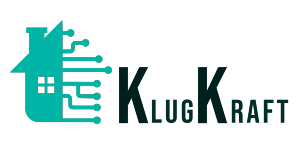Home automation, also known as smart home technology, refers to the integration of various devices and systems within a home to enable centralized control, automation, and remote monitoring. It leverages advancements in technology, such as the Internet of Things (IoT), artificial intelligence (AI), and wireless connectivity, to enhance convenience, efficiency, comfort, and security for homeowners. Here’s an overview of home automation:
- Components and Devices: Home automation encompasses a wide range of devices and systems, including smart thermostats, lighting controls, security cameras, door locks, motion sensors, smart appliances, entertainment systems, and more. These devices are interconnected through a central hub or network and can be controlled remotely via smartphones, tablets, or voice commands.
- Centralized Control: One of the key features of home automation is centralized control. Homeowners can use a single interface, such as a mobile app or voice assistant, to manage and monitor various aspects of their home environment. This allows for seamless integration and control of multiple devices and systems from anywhere with an internet connection.
- Automation and Scheduling: Home automation enables the automation of routine tasks and activities based on predefined schedules, triggers, or conditions. For example, homeowners can program their smart thermostat to adjust the temperature settings based on occupancy patterns or outdoor weather conditions. Similarly, lights can be programmed to turn on or off automatically at specific times of the day or in response to motion or daylight levels.
- Energy Efficiency: By intelligently controlling heating, cooling, lighting, and other energy-consuming devices, home automation can help improve energy efficiency and reduce utility costs. For instance, smart thermostats can optimize HVAC (Heating, Ventilation, and Air Conditioning) systems to minimize energy consumption while maintaining comfort levels. Additionally, lighting controls can dim or turn off lights in unoccupied rooms to save energy.
- Convenience and Comfort: Home automation enhances convenience and comfort by streamlining everyday tasks and providing personalized experiences. For example, homeowners can use voice commands to control lights, adjust room temperatures, play music, or even brew coffee without having to lift a finger. Smart home technology can also learn user preferences over time and automate responses accordingly, such as adjusting lighting scenes or setting the perfect shower temperature.
- Security and Surveillance: Home automation offers advanced security features, including remote monitoring, motion detection, video surveillance, and smart locks. Homeowners can receive real-time alerts and notifications on their mobile devices in case of suspicious activities or security breaches. They can also remotely monitor and control access to their home, whether it’s locking/unlocking doors, arming/disarming security systems, or granting temporary access to visitors.
- Scalability and Customization: Home automation solutions are highly scalable and customizable to meet the unique needs and preferences of homeowners. They can start with basic devices and gradually expand their smart home ecosystem by adding more devices and integrating additional functionalities. Home automation platforms often support third-party integrations and interoperability, allowing users to mix and match devices from different manufacturers.
Overall, home automation offers a myriad of benefits, including convenience, energy efficiency, security, and comfort, transforming traditional homes into intelligent, interconnected living spaces. As technology continues to evolve, the capabilities of home automation will only expand, offering even more possibilities for homeowners to create smarter, safer, and more efficient homes.

